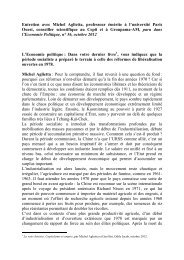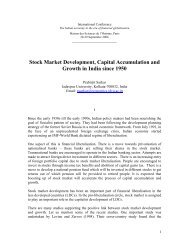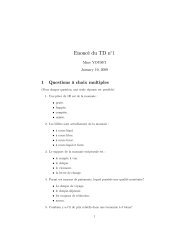Does the Entry Mode of Foreign Banks Matter for Bank ... - EconomiX
Does the Entry Mode of Foreign Banks Matter for Bank ... - EconomiX
Does the Entry Mode of Foreign Banks Matter for Bank ... - EconomiX
You also want an ePaper? Increase the reach of your titles
YUMPU automatically turns print PDFs into web optimized ePapers that Google loves.
The line <strong>of</strong> literature that addresses <strong>the</strong> impact <strong>of</strong> <strong>for</strong>eign bank entry on bankper<strong>for</strong>mance in <strong>the</strong> context <strong>of</strong> emerging and transition economies has done so mainly bycomparing <strong>the</strong> per<strong>for</strong>mances <strong>of</strong> <strong>for</strong>eign and domestic banks. Common findings inempirical studies generally point to a positive relationship between <strong>for</strong>eign involvement,<strong>for</strong>eign ownership, as denoted by different levels <strong>of</strong> participation <strong>of</strong> <strong>for</strong>eign banks indomestic banks, and bank per<strong>for</strong>mance (Bonin et al., 2005).Some studies have focused on <strong>the</strong> countries <strong>of</strong> interest to our paper, <strong>for</strong> instance,Sabi (1996) who compared <strong>the</strong> per<strong>for</strong>mance <strong>of</strong> domestic and <strong>for</strong>eign banks in Hungary<strong>for</strong> <strong>the</strong> period 1992-1993, when <strong>the</strong> <strong>for</strong>eign banks that were present in Hungary weremostly Greenfield investments. Using data on financial statements <strong>of</strong> banks from <strong>the</strong>Hungarian Financial and Stock Exchange Almanac, <strong>the</strong> author constructs accountingmeasures <strong>of</strong> bank per<strong>for</strong>mance that reflect pr<strong>of</strong>itability, liquidity and credit risk, andcommitment to <strong>the</strong> market economy <strong>of</strong> both types <strong>of</strong> banks. The author <strong>the</strong>n uses t- testsand Kruskal–Wallis tests and finds significant differences in <strong>the</strong>se indicators generally infavor <strong>of</strong> <strong>for</strong>eign banks.(Nikiel & Opiela, 2002) examines <strong>the</strong> determinants <strong>of</strong> bank efficiency in Polandfrom 1997 to 2000. The authors first estimate cost and pr<strong>of</strong>it efficiencies usingDistribution Free Approach (DFA). Then, <strong>the</strong>se efficiency scores are used in a secondstage regression with independent variables representing bank characteristics such assize, ownership, and customer type. The results show that <strong>for</strong>eign banks working with<strong>for</strong>eign clients are more cost-efficient than private domestic banks, while <strong>for</strong>eign banksworking with domestic clients are not. By contrast, <strong>for</strong>eign banks with <strong>for</strong>eign clients areless pr<strong>of</strong>it-efficient than private domestic banks, while <strong>for</strong>eign banks with domesticclients are not. Moreover, cost scale economy and pr<strong>of</strong>it diseconomy <strong>of</strong> scales are foundto be present.Weill (2003) uses stochastic frontier analysis to study bank efficiency in <strong>the</strong>Czech Republic and Poland in 1997. Cost efficiency scores reveal that on average,<strong>for</strong>eign banks are more cost efficient than domestic banks. In a second-stage regression,he models <strong>the</strong> inefficiency scores, controlling <strong>for</strong> size and structure <strong>of</strong> activities andconcludes that <strong>the</strong>se factors had no impact on inefficiency.-4-




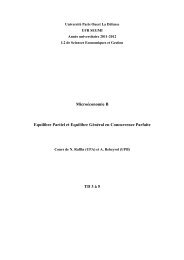

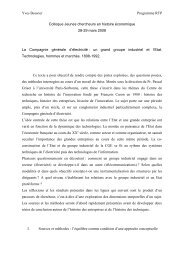

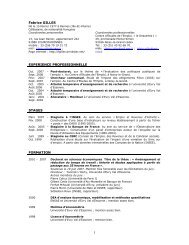
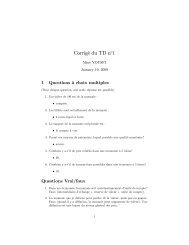
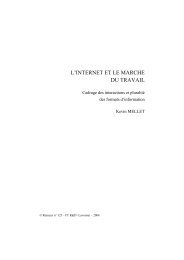
![P * 1 JTZWL_TZY OP^ Sd[Z_Sl^P^ !=m_m]Z^NmOL ... - EconomiX](https://img.yumpu.com/42226403/1/190x143/p-1-jtzwl-tzy-op-sdz-slp-m-mznmol-economix.jpg?quality=85)
